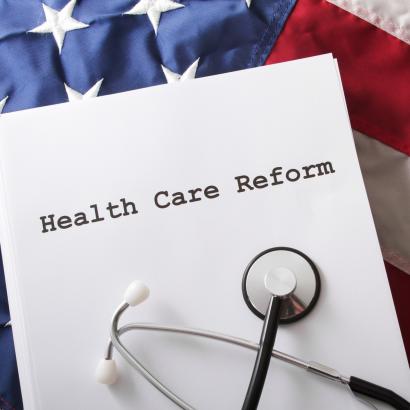Click here to download the introduction to the Choices for All Project.
There is near-universal agreement that the US healthcare system fails to deliver affordable and high-quality care for all Americans. But the consensus ends there. Politicians and health-policy experts can’t agree on how to improve the system.
Why is our system so broken? Why have past reforms failed? Is there a better way forward?
Recent legislative remedies have embraced the notion that healthcare is different from other markets. Advocates of “Medicare for All” and the public option argue that providing up-front prices for health services is not useful because shopping is impossible when people are in pain, uninsured, or at the emergency room. Prices and competition are unnecessary, they argue, when providing a “human right” such as healthcare. Indeed, purchasing healthcare isn’t like buying a car or a television.
But the rules of supply and demand apply to healthcare just as they do in every other market. And centralized healthcare suffers from the same issues as all other centralized economic activity: it distorts prices so that they no longer convey useful information about value or cost. In the process, it takes choices away from patients and limits them to government-approved coverage.
Instead, we believe the answer lies with patients. By providing patients with meaningful prices and genuine choices, they will make informed healthcare decisions that bring down prices while preserving quality and access. The key is to put more decisions in the hands of patients. That means introducing meaningful prices into the system. It means fewer supply-side regulations that limit the supply of hospitals or providers. And it means finding new, innovative ways to deliver insurance and medical care that better meet the demands of patients.
These reforms should not eliminate existing options—politicians should be able to honestly promise that “if you like your healthcare plan, you can keep it.” Instead, new choices should be created that offer clear benefits to consumers while improving their incentives to think deeply about the kind of medical care that they purchase. This does not mean that reforms can be costless or will not face political opposition. Inevitably, every reform will hurt someone’s bottom line. But wherever possible, we need reforms that expand the choices available to consumers. In other words, successful healthcare reforms should offer consumers carrots, not cudgels.
The Choices for All Project seeks to do just that. The plan offers various healthcare reforms that would jumpstart competition, help to furnish meaningful and transparent prices to patients, and bring consumer sovereignty to the healthcare market for many Americans under sixty-five years of age. We aim to improve incentives for consumers, providers, and payers. Over the long term these reforms would lower overall costs, offer more choices in our healthcare system, and provide effective health coverage for those who cannot afford necessary medical care.
Our goals are as follows:
- Empower individuals to take more control of their healthcare decisions.
- Encourage personal saving for healthcare expenditures to protect against unexpected or catastrophic costs.
- Protect vulnerable populations while supporting them on their path toward self-sufficiency.
- Create competitive markets for healthcare services and insurance coverage that offer tailored products capable of meeting diverse preferences and needs.
- Reduce the growth of healthcare costs by promoting price transparency and reducing the reliance on third-party payment.
- Expand the supply of medical care.
- Promote long-term spending and deficit reductions (although not insisting on deficit neutrality in the first year of operation).
- Reduce long-term dependency on the government by providing better options for individuals and families.
To achieve these goals, we propose reforms that would put more control in the hands of those who currently have employer-based coverage, promote universal savings accounts specifically for healthcare expenses, encourage states to rescind regulations that reduce available coverage options and increase prices, and promote experimentation within state Medicaid policies to give recipients more control over their healthcare.
To download the introduction to the Choices for All Project, click here.
















